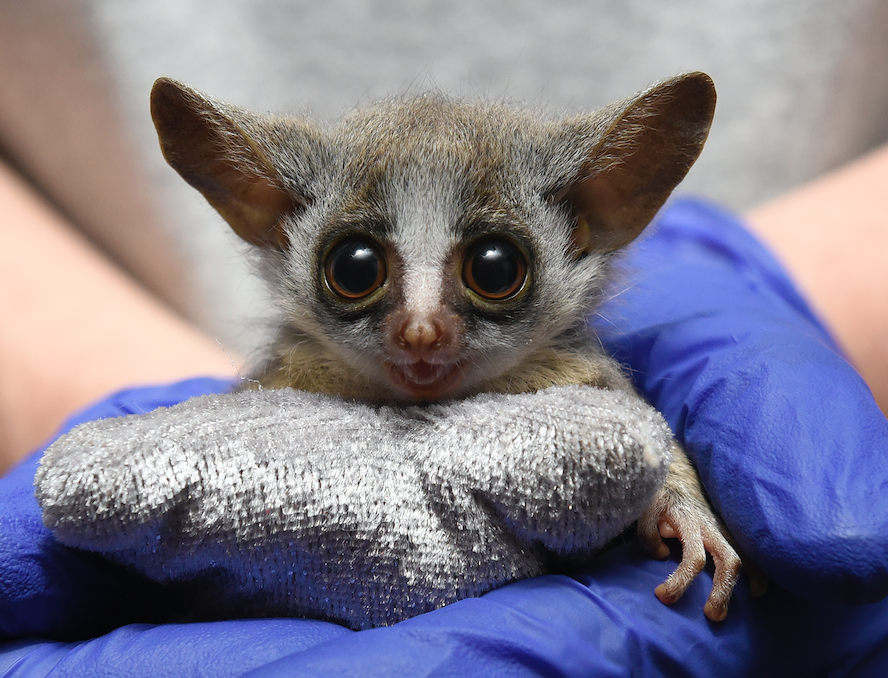
Bush Babies: The Enchanting Primates of the African Night
In the heart of Africa’s vibrant forests, where the sun surrenders to the embrace of twilight, there exists a captivating creature that embodies the magic of the nocturnal realm: the bush baby. These enigmatic primates, known for their large, expressive eyes and agile movements, have captivated the imaginations of humans for centuries.
Taxonomy and Distribution
Bush babies, scientifically classified as Galagidae, belong to the primate suborder Strepsirrhini, which includes lemurs and lorises. They are found throughout sub-Saharan Africa, inhabiting a wide range of habitats, from dense rainforests to savannas and woodlands.
Physical Characteristics
Bush babies are small, slender primates with a distinctive appearance. Their bodies typically measure between 12 and 20 inches in length, with a tail that can be even longer. Their fur is soft and dense, ranging in color from gray to brown or reddish-brown.
The most striking feature of bush babies is their large, round eyes, which are adapted for nocturnal vision. Their eyes are surrounded by dark rings, giving them a wide-eyed, almost startled expression. Their ears are large and mobile, allowing them to detect the slightest sounds in the darkness.
Bush babies have long, slender limbs and powerful hind legs, which enable them to leap and bound through the trees with incredible agility. Their hands and feet are equipped with sharp claws that provide a secure grip on branches.
Behavior and Social Structure
Bush babies are primarily nocturnal, spending the day sleeping in tree hollows or dense vegetation. As night falls, they emerge from their shelters and embark on their nightly foraging expeditions. They are solitary animals, except during the breeding season, and typically occupy small home ranges.
Bush babies are highly vocal creatures, communicating with a variety of calls and vocalizations. They use high-pitched whistles, clicks, and trills to signal danger, attract mates, and maintain contact with each other.
Diet and Feeding Habits
Bush babies are omnivorous, with a diet that includes insects, fruits, leaves, and small vertebrates. They are skilled hunters, using their keen eyesight and hearing to locate prey in the darkness. They typically forage alone, but may occasionally join forces with other bush babies to hunt larger prey.
Reproduction and Life Cycle
Bush babies reach sexual maturity at around 18 months of age. Females typically give birth to a single offspring, or occasionally twins, after a gestation period of around 120 days. The newborn bush baby, known as a "pup," is born with its eyes open and is able to cling to its mother’s fur.
Pups are nursed for several months and gradually become more independent. They typically remain with their mother for up to a year, learning essential survival skills and social behaviors.
Conservation Status
Bush babies are generally considered to be a species of least concern by the International Union for Conservation of Nature (IUCN). However, some populations are facing threats from habitat loss, hunting, and the illegal pet trade.
Cultural Significance
Bush babies have long been revered in African cultures. In some traditions, they are believed to be messengers from the spirit world or guardians of the forest. Their large eyes and nocturnal habits have also made them a popular subject of folklore and mythology.
Conclusion
Bush babies are enchanting creatures that embody the magic and mystery of the African night. Their large eyes, agile movements, and vocalizations have captivated humans for centuries. As we continue to explore and appreciate the wonders of the natural world, these enigmatic primates will undoubtedly continue to inspire and fascinate us for generations to come.
